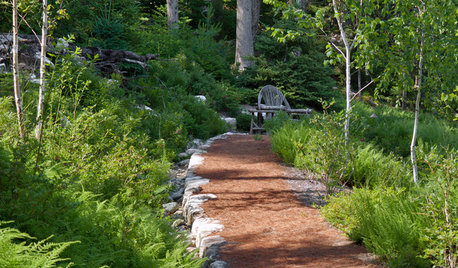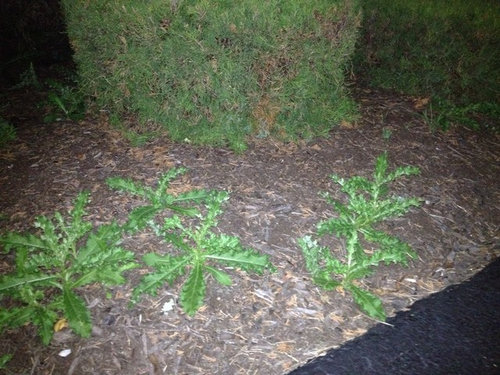Best Weed Killer for This Weed?
AirBenji
11 years ago
Related Stories

GARDENING GUIDESWeed War: When and How to Use Chemical Herbicides
Before you spray, arm yourself with knowledge about which weed killers — natural or synthetic — are right for your yard
Full Story
EDIBLE GARDENSNatural Ways to Get Rid of Weeds in Your Garden
Use these techniques to help prevent the spread of weeds and to learn about your soil
Full Story
GARDENING GUIDES5 Ways to Naturally Win the Weed War
Show irksome weeds no mercy with these tricks for combating them sans chemicals
Full Story
GARDENING GUIDESWhat’s in a Name? See 6 Wildflowers That Aren’t ‘Weeds’ at All
Dispel the stereotypes of weeds and try these wildlife-supporting native wildflowers in your garden
Full Story
GARDENING GUIDES5 Weed-Smothering Ground Covers
Let these landscape plants do the dirty work of choking out weeds while you sit back and enjoy the view
Full Story
GARDENING GUIDESGreat Design Plant: Bugle Weed, a Quick Ground Cover
It’s highly adaptable, suppresses weeds, reduces erosion and provide weeks of bright flowers. Just watch for invasiveness
Full Story
GARDENING GUIDES5 Things to Know About Weeding and Mulching Your Native Garden
What’s the best time to pull weeds? How thick should the mulch be? Here’s the scoop for a healthy landscape
Full Story
GARDENING GUIDESTackle Weeds the Natural Way
Instead of dousing your yard with chemicals to wipe out weeds, let time and nature work their magic via smothering and solarization
Full Story
FLOWERSGreat Design Plant: Joe Pye Weed
This unsung beauty tolerates wet soil, provides beautiful late summer blooms and attracts butterflies and hummingbirds
Full Story
HOUZZ TOURSHouzz Tour: From Overgrown Weeds to Picturesque Farmhouse Expanse
This once-neglected 100-acre South Carolina site now features a lake, a wood-filled farmhouse and a far-reaching view
Full Story







texas_weed
AirBenjiOriginal Author
Related Professionals
Forest City Landscape Architects & Landscape Designers · Brooklyn Center Landscape Architects & Landscape Designers · Brunswick Landscape Contractors · Cliffside Park Landscape Contractors · Fridley Landscape Contractors · Gresham Landscape Contractors · Hawaii Landscape Contractors · Oklahoma City Landscape Contractors · Panama City Beach Landscape Contractors · Snoqualmie Landscape Contractors · South Hackensack Landscape Contractors · Thornton Landscape Contractors · East Norriton Landscape Contractors · Crowley Landscape Contractors · Fair Oaks Swimming Pool Buildersdchall_san_antonio
kimpa zone 9b N. Florida.
ZoysiaSod
ZoysiaSod
smithmal
dmoore66_gardener
Sri121